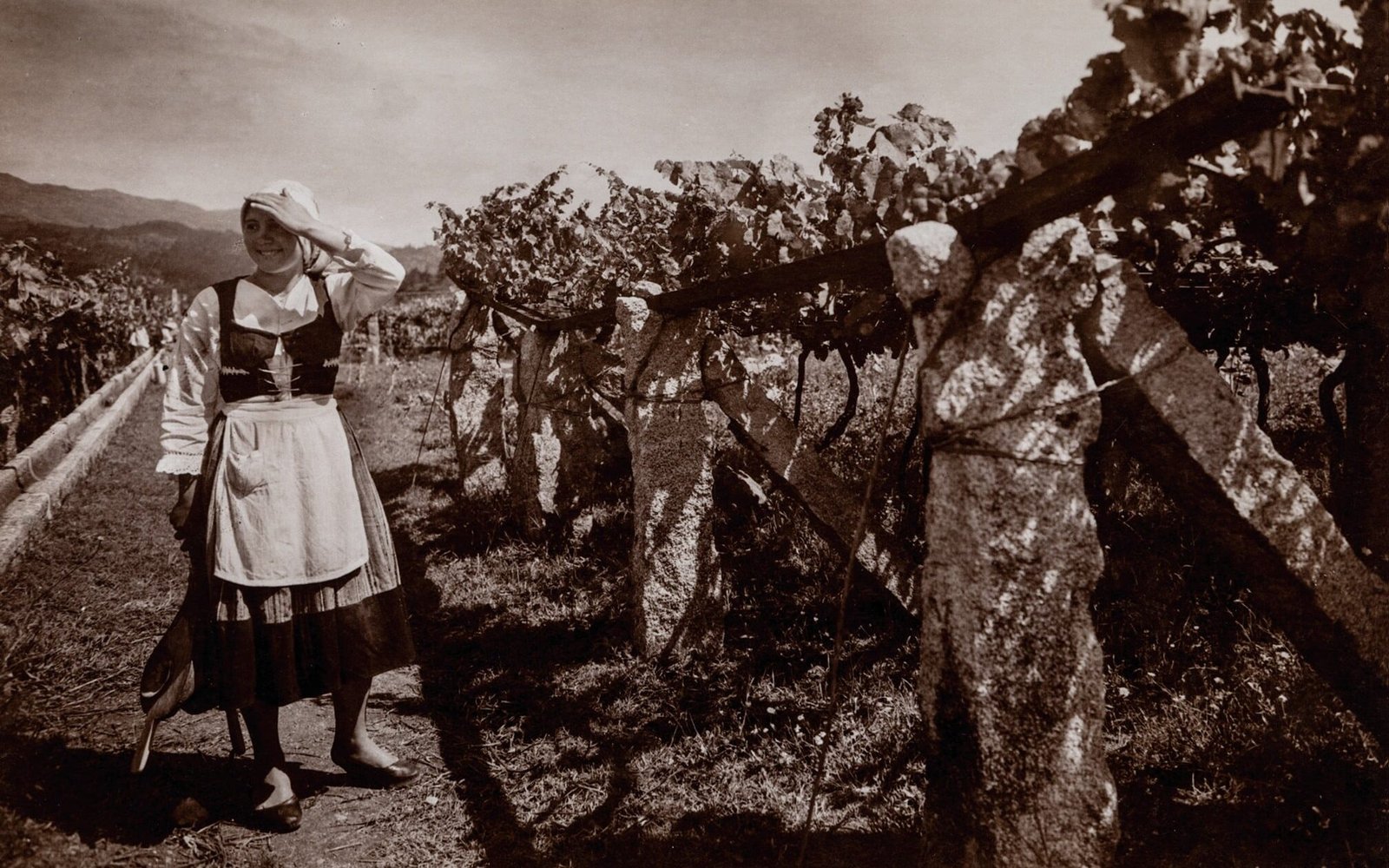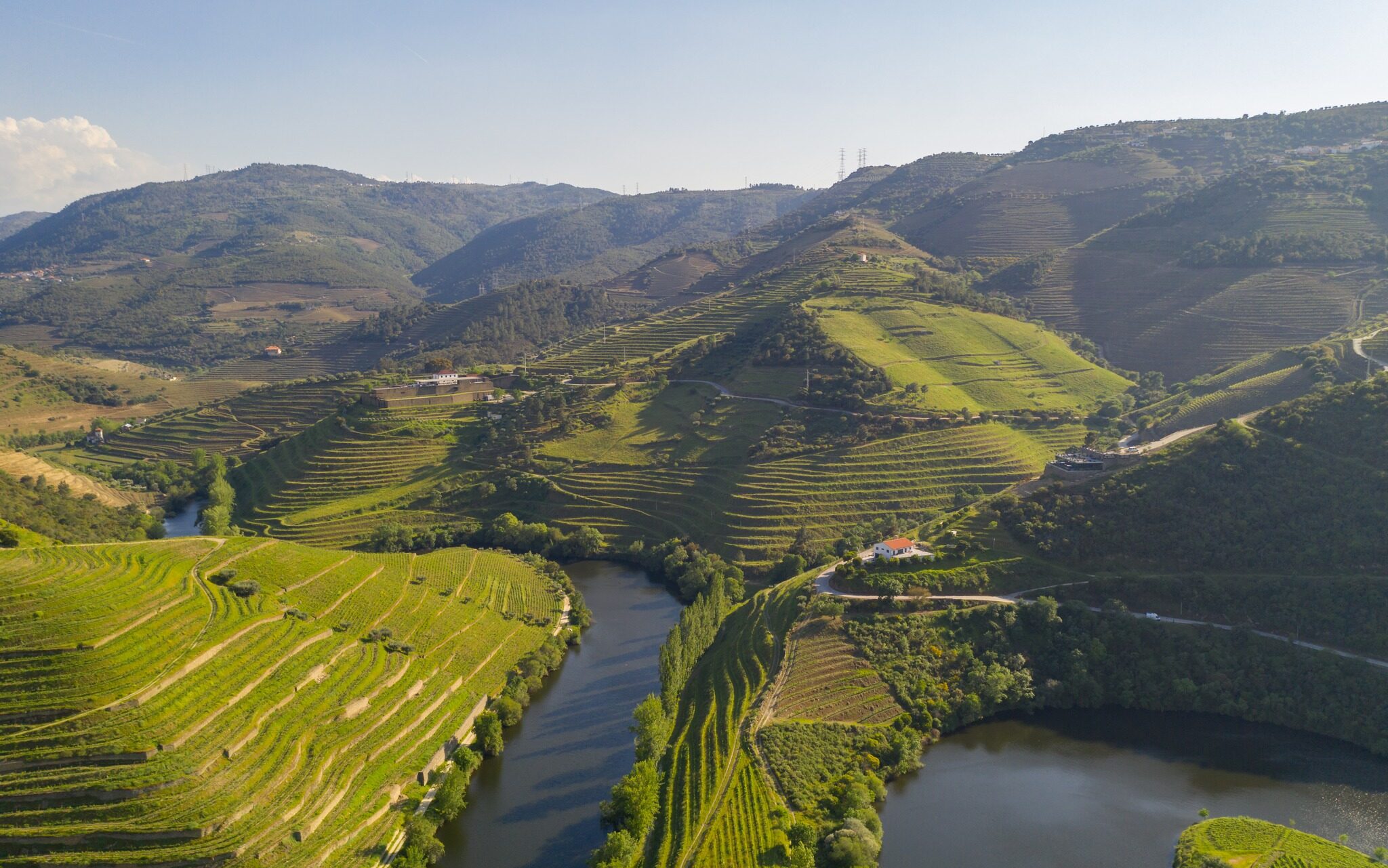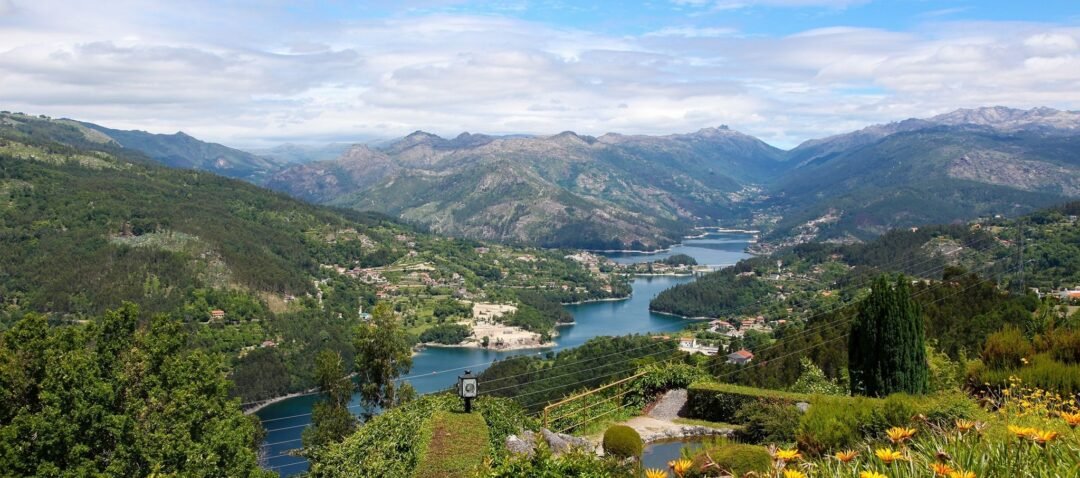Vinho Verde wines. The ultimate in light, bright, easy-drinking whites. Low in alcohol, refreshing, subtly sparkling, and with just a touch of fruity sweetness on the finish. An affordable option in a sea of increasingly expensive wine choices.
This highly stereotypical description has been used for decades to sum up the wines of the verdant Minho region of northwest Portugal. The consistency and unique personality of Vinho Verde wines made for a simple branding message that has long resonated with casual wine drinkers around the world.
This global success has been a boon to the region, allowing for expansion, modernization, and, most importantly, a wave of quality-focused winemakers. Stylistically, the Vinho Verde wines of today are far more than a one-trick pony.
From Rustic Reds to Modern White Vinho Verde Wines
Winemaking is not a new activity for the Minho area. The first literary references date back to the first century AD. The old Minho province was officially recognized as a wine region in 1908. At that time, and well into the latter half of the century, red wine dominated.
The agricultural focus was on dairy and corn. Vineyards were an afterthought, grown on the edges of fields, up trees, or in overhead (pergola) canopies. The dense shading of these training methods, combined with cool winds and steady rain from the nearby Atlantic Ocean, made ripening a challenge and rot an ever-present concern. The wines were often thin, tart, and rough around the edges.

All that started to change in the late 1970s, with the advent of more modern winemaking practices, including the introduction of inert tanks, temperature control, and a greater emphasis on cellar hygiene. This brought about a radical shift – to clean, fruity white wines with a subtle spritz of injected carbon dioxide to heighten their lively, early-drinking appeal.
Vinho Verde Wines : The Blend and the Sum of its Parts
While the Vinho Verde name has gained recognition among white wine lovers, the grapes that make up its blends have not. Over 45 different varieties are planted in the region. For white wines, the most common are Loureiro, Alvarinho, Arinto (aka Pedernã), Avesso, Azal Branco, and Trajadura.
Each grape had its role to play in the blend, Loureiro for its pretty floral aromatics or its broader structure, Alvarinho for its vibrancy and its array of citrus, stone, and tropical fruit flavours, Arinto for its nervy minerality, Avesso for its creamy texture, Trajadura for its steely structure and so forth. However, the focus has traditionally always been the blend and not its component parts.
Fast forward to the late 1990s, and all this began to change.
Vinho Verde Wines Terroir Pioneers
The turn of the century brought with it a wave of new energy in Vinho Verde. A handful of respected winemakers, like Anselmo Mendes, Quinta da Soalheiro, and Quinta do Ameal, started setting their sights on more complex, age-worthy wines.
The vineyards of Vinho Verde are divided into nine sub-regions separated by the Minho, Lima, Cávado, Ave and Douro Rivers and their many tributaries. Each area is unique in its proximity or distance from the Atlantic, the influence of its waterways, its undulations, meso-climate, and so forth. Granitic sandy and loam-rich soils dominate throughout Vinho Verde, but several veins of schist traverse the region from south-east to northwest, and stony outcrops also exist in several areas.
Mendes and his contemporaries sought to dial into these sub-regional differences by creating specific blends or single variety bottlings that best expressed their place. In 1998, Mendes, a renowned Portuguese consulting winemaker, returned to his native Monção with this goal in mind.

The Vinho Verde sub-region of Monção and Melgaço is located in the northern reaches of the denomination, along the inland banks of the Minho River. Lower annual rainfall and warmer summer temperatures here create rich, structured Alvarinho wines with fragrant peach and exotic fruit notes.
Further south, other grapes found their groove. The Lima Valley proved an ideal terroir for single variety Loureiro, with its highly refreshing, floral expression. The inland sub-region of Baião has more continental influences with warmer summers. Here, the late ripening Avesso grape shines; developing notable body and depth.
Terroir-focused single variety bottlings, as well as blends, have become increasingly prominent in recent years. Winemaking practices vary from traditional, unoaked, early bottled styles to longer aged, discreetly oaked wines.
Beyond White Vinho Verde Wines
Once a second-class crop relegated to the periphery, Vinho Verde vineyards now span some 16 thousand hectares. The wines are produced by 370 wine bottlers across the region. White wine remains the undisputed focus, accounting for over 85% of sales, but Vinho Verde rosé and red wine are gaining a niche following.
Sparkling wine from Vinho Verde – not the subtly spritzy – but properly effervescent espumante wines made using the tank, traditional, and now Pét Nat methods are also generating buzz, though they remain difficult to come by in most export markets.
Quinta da Soalheiro was the first in the region to produce traditional method Alvarinho sparkling wine back in 1995. Almost thirty years later, they remain a reference for quality espumante, encouraging many to follow suit. Loureiro and Trajadura are also common choices for sparkling Vinho Verde.
Looking to the Future
Rainfall is high in much of Vinho Verde. While this makes for a lush, green landscape, it also means that fungal disease is a constant threat. Despite this, some of Portugal’s leading names in biodynamic and in organic winemaking are based here.

In 2003, Vasco Croft took over abandoned family-owned vineyards in the Lima Valley. By year three he began converting the property to biodynamic farming, and grew to over 20 hectares. The success of his estate, Aphros Wines, alongside fellow biodynamic great Fernando Paiva of Quinta da Palmirinha, is an inspiration to younger generations.
The list of certified organic wineries continues to grow, led by estates and négociants like Casa de Mouraz, Quinta das Arcas, Quinta de Santiago, and A&D Wines. Their efforts go far beyond prohibiting chemical vineyard treatments, to biodiversity initiatives, conservation initiatives, and an overall commitment to lowering carbon footprint.
A Tale of Two Vinho Verde Wines
Those who love the simplicity of a crisp, light, spritzy Vinho Verde will not be lost in this brave new world of Vinho Verde wines. The region’s iconic style still makes up the bulk of its production. However, it is exciting to see how multi-faceted Vinho Verde wines have become.
New names of top Vinho Verde producers – from classic to avant-garde, traditional to natural – are cropping up all the time. Racy high acidity remains a hallmark of the region, across its sub-regional and single variety bottlings as well as its blends. However, fruit expressions, texture, and body vary more widely than ever before, offering something for every palate.
This Vinho Verde Wines piece is re-printed (with permission) from my article written for Good Food Revolution. If you want to learn more about artisanal food, wine, beer and spirits, check out their excellent website.



